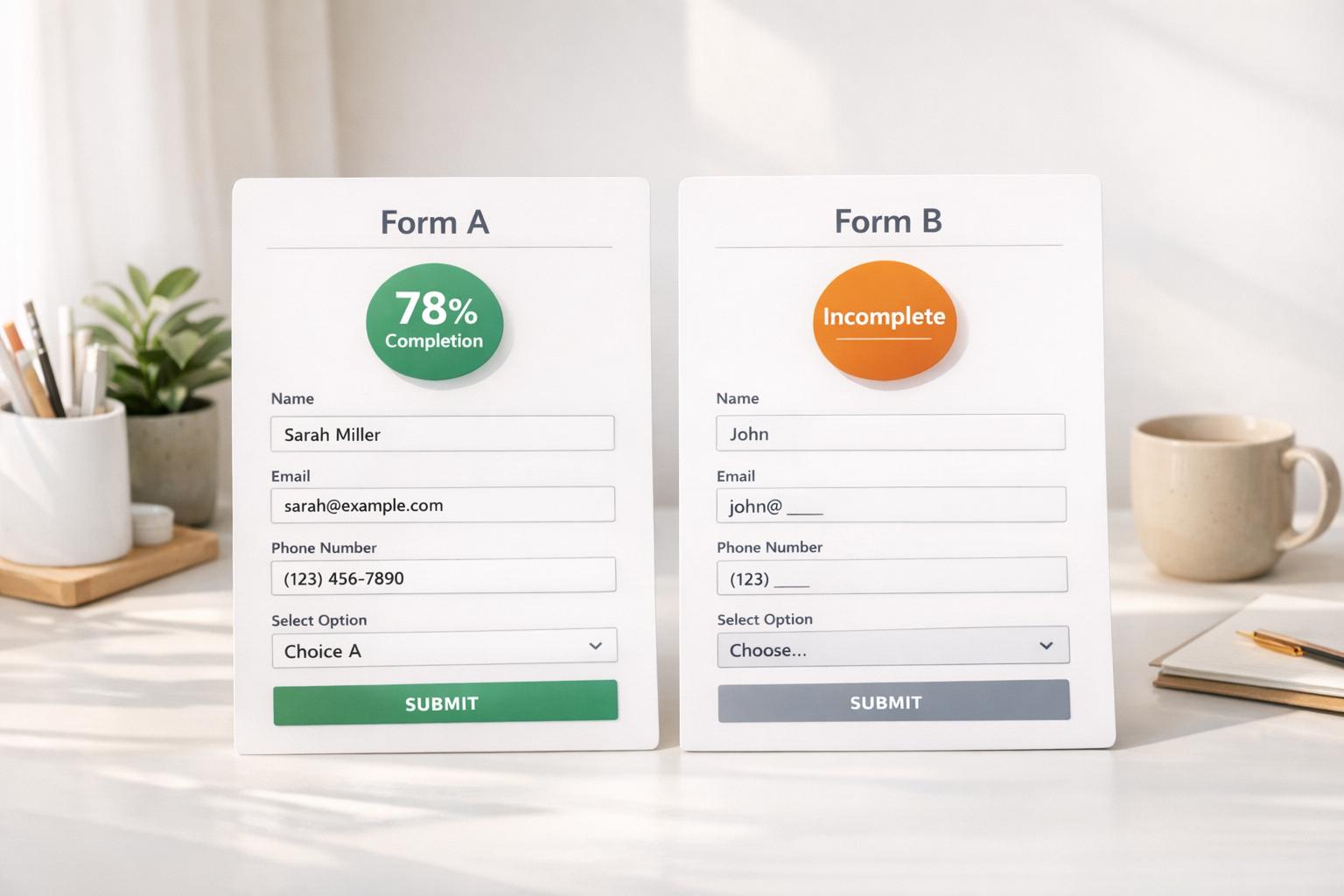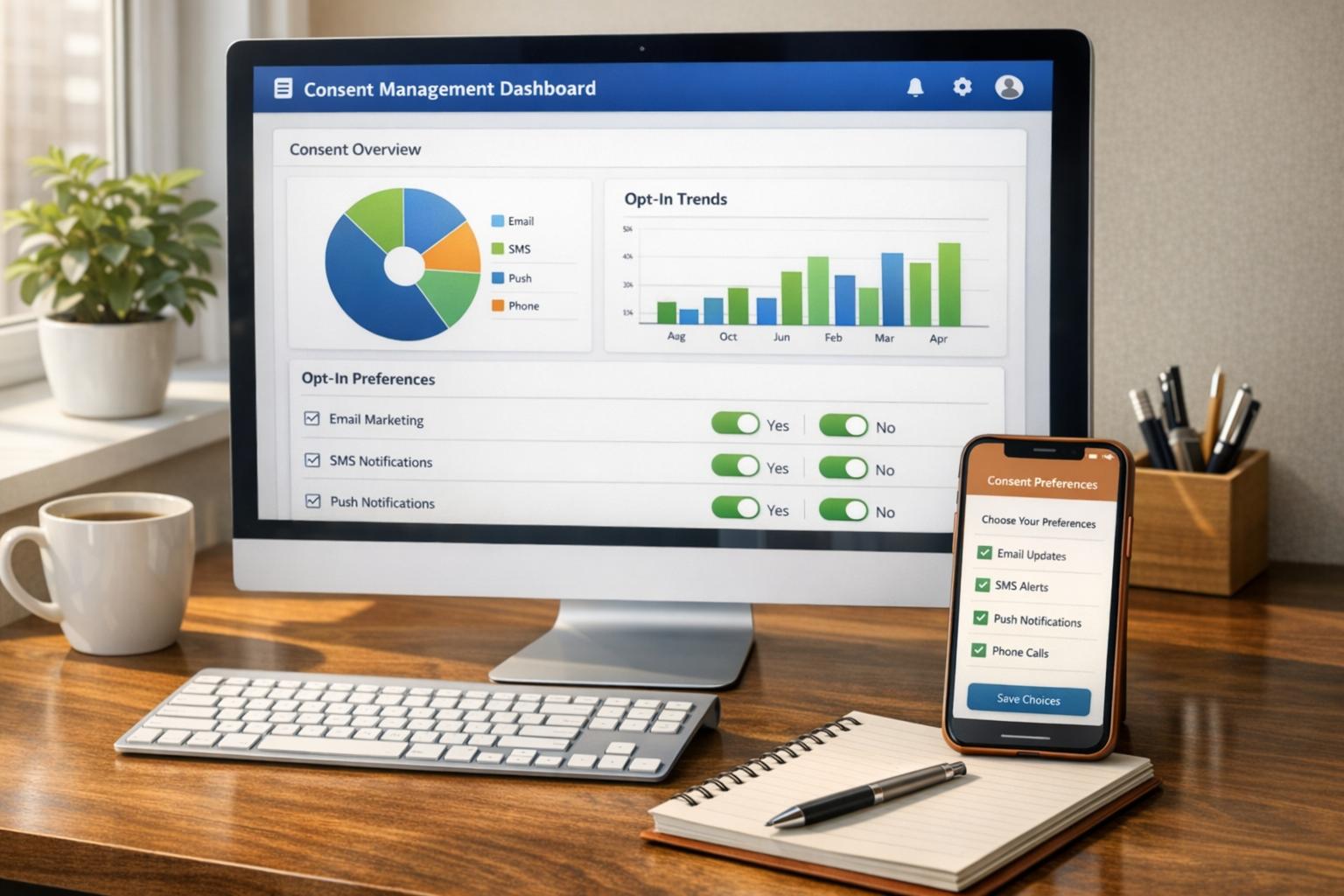Designing CRM forms for improved data collection and customer engagement

Introduction
Alright, folks, here's the deal: CRM forms are the unsung heroes of business engagement and data management. They're like that dependable friend who always carries snacks on a hike—essential yet often taken for granted. Infinite email campaigns and automated workflows can be impressive, but if your CRM forms are slacking, you're essentially losing the game before it even starts.
Let's be honest, though. Designing those forms can feel like herding cats—if the cats were also juggling chainsaws. But worry not, dear marketer! We're going to tackle the common headaches in form design and rescue you from the avalanche of indecision and confusion.
Why CRM form design matters
Efficient CRM forms aren't just some minor footnote in your marketing playbook; they're the connective tissue between data collection and customer engagement. A well-designed form can supercharge your data-gathering efforts, ensuring that you're not just collecting data, but collecting the right data.
When forms are optimized, the customer experience elevates like a caffeine-fueled rocket launch. Smooth interactions lead to happier customers, who are more likely to stick around and throw their hard-earned cash your way. And let's not ignore the internal benefit—a streamlined data flow into your CRM means less manual entry and fewer formatting gymnastics.
Best practices for designing CRM forms
Here are some nifty strategies to incorporate while designing your forms, because nobody wants a user experience that's more obstacle course than groundbreaking.
Field selection
Keep it concise, people. No one wants to share the intimate details of their pet’s dietary habits just to download a whitepaper. Prioritize the essentials and toss out the rest. However, you can make a form appear shorter—even if it's not—by tweaking the layout. For instance, changing the form from a single-column to a two-column layout can make it look less daunting. One of our clients did exactly that—switching from a one-column to a two-column format—and saw a 16% increase in leads. By organizing fields side by side, the form appeared shorter and more approachable to users. Finding the sweet spot between obtaining necessary customer insights and maintaining simplicity is crucial.
Layout optimization
Intuitive layouts are your best friend here. Think of your form as the IKEA of data collection but without the extra screws left over. Strategic design reduces user hesitation and friction. For real-world inspiration, contemplate those forms that feel like a delightful meander through your favorite store.
Integration with CRM systems
Alright, it's time to integrate those forms with your CRM systems. This should feel less like a full-blown spiraling-dance concert and more like a gentle waltz. Implement straightforward integration solutions that won't make your IT team weep with despair. Reform, for example, offers options that even your grandma could figure out.
User experience enhancements
Improving the user experience is where the magic truly happens. Use A/B testing like it’s going out of style, and iterate based on user feedback. The goal is to make form completion as satisfying as popping bubble wrap.
Practical tips and real-world examples
Let’s ground these ideas with some boots-on-the-ground (or clicks-on-the-screen) insights.
Actionable Steps
Marketers lacking technical chops can still play in the big leagues. Focus on intuitive tools to create forms—yes, I’m looking at you Reform users—that allow for seamless changes without the need for developer interventions.
Common pitfalls and how to avoid them
Now, let's not stumble over the obvious potholes. Common design mistakes can include overwhelming users with mandatory fields or choosing aesthetics over functionality. Keep it real by maintaining a balance and regularly auditing your forms for effectiveness.
- Avoid cluttering your forms: Your mother was right—less is more.
- Inconsistent design: Keep your form style aligned with your brand identity.
- Lack of validation: Make sure your inputs are validated to keep data clean. Real-time feedback here is a winner.
Bottom line
At the end of the day, the linchpin in your marketing endeavor is the thoughtful design of CRM forms. They're pivotal to improving business operations and achieving higher customer satisfaction. With the right practices, these forms will be the reliable, steady hand that guides prospects into your sales funnel.
So, marketers, I challenge you to experiment and customize your approach. Let these strategies offer up better engagement rates and data quality for your CRM systems. And hey, if you're looking for a top-notch form builder to help along the way, Reform has your back. Check it out at www.reform.app.
Get new content delivered straight to your inbox

The Response
Updates on the Reform platform, insights on optimizing conversion rates, and tips to craft forms that convert.
Drive real results with form optimizations
Tested across hundreds of experiments, our strategies deliver a 215% lift in qualified leads for B2B and SaaS companies.


.webp)



